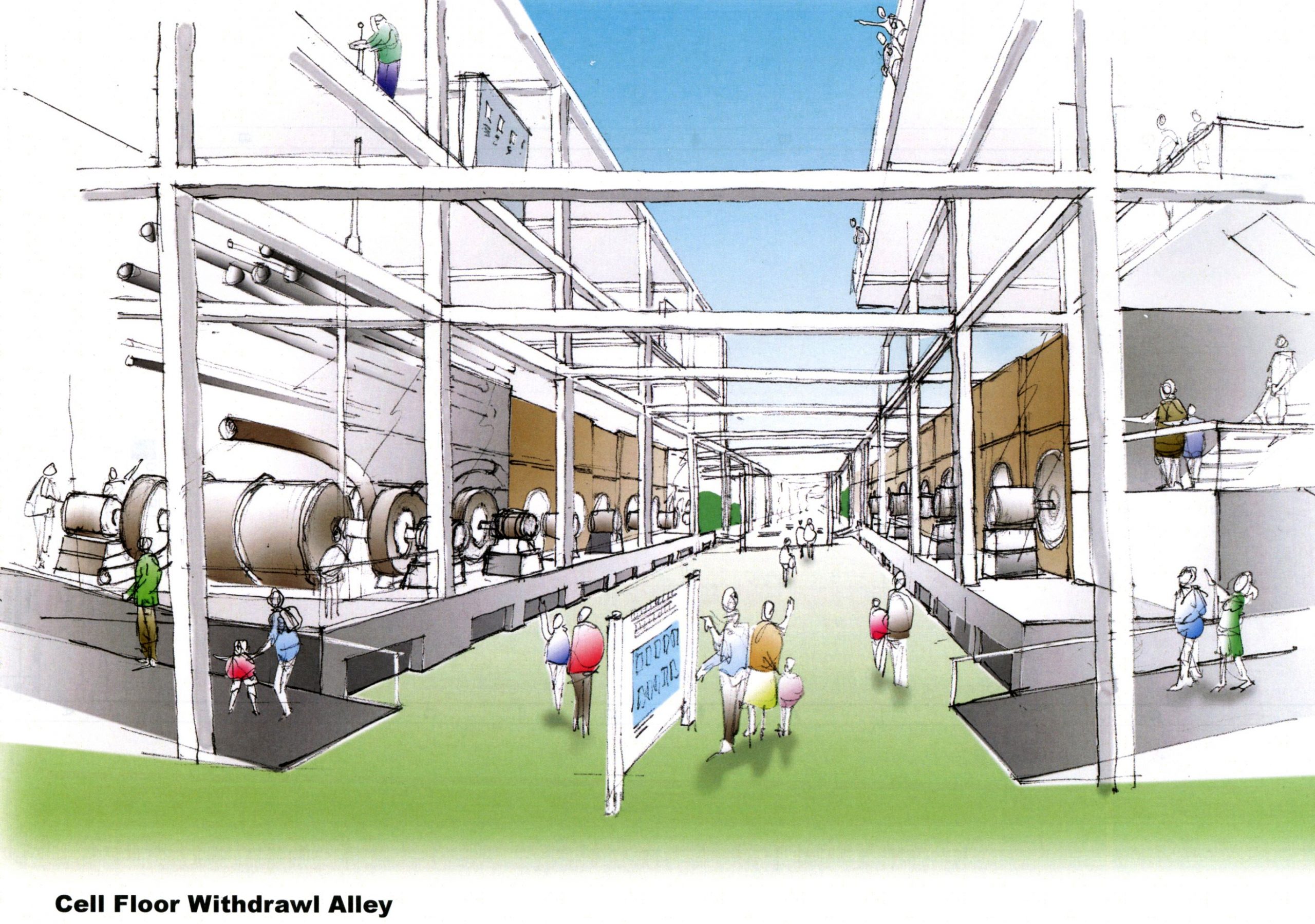On January 22, 2015, the Department of Energy-Oak Ridge hosted a meeting to review progress on implementing the commitments made in the 2012 Memorandum of Agreement to mitigate the demolition of the entire K-25 plant. Mayor Warren Gooch and City Manager Mark of Oak Ridge, Patrick McIntyre and Claudette Stager of the Tennessee Historical Commission, and some 50 others attended.
Gregor Smee, Smee + Busby Architects, and Gerald Hilferty, Hilferty & Associates, reported on their efforts to design and provide interpretive exhibits for the History Center, Equipment Building and Viewing Tower. Greg Smee began by saying that “it is sad that nothing of the K-25 plant is preserved.” He was inspired to “bring the plant back of life” in his architectural scheme that presents the entire cross-section of one of the 54 original buildings. On the west end, the structure is a large steel frame with intermittent columns, “like shimmering bones, bare, without sinew.” The building façade seems to be “re-integrating back to its original state” as it moves eastward with more columns, siding and details. Finally, at the eastern end is the open cell exhibit and viewing tower.
The tower’s observation deck is inspired by the de Young Museum in San Francisco’s Golden Gate Park. From here, one can see north to the half-mile length of the original K-25 plant, south to the former Happy Valley community, east to the industrial park, or west into the cell floor, pipe gallery and operating floors next to the tower. A short and long loop for walking, bicycling or driving will take visitors around the original K-25 plant site past a dozen wayside exhibit panels.
The History Center will be located on the second story of the fire station nearby. The orientation theater will immerse visitors in World War II and give them a sense for the urgency and secrecy of the project. The exhibits will have many artifacts from K-25 and give visitors a sense for the ingenuity required to produce enough enriched uranium for the world’s first atomic bombs.
The overall plan is quite exciting and could make the K-25 site a significant attraction for visitors to the new Manhattan Project National Historical Park. Now the challenge is to obtain the $12 million needed to complete the project.





